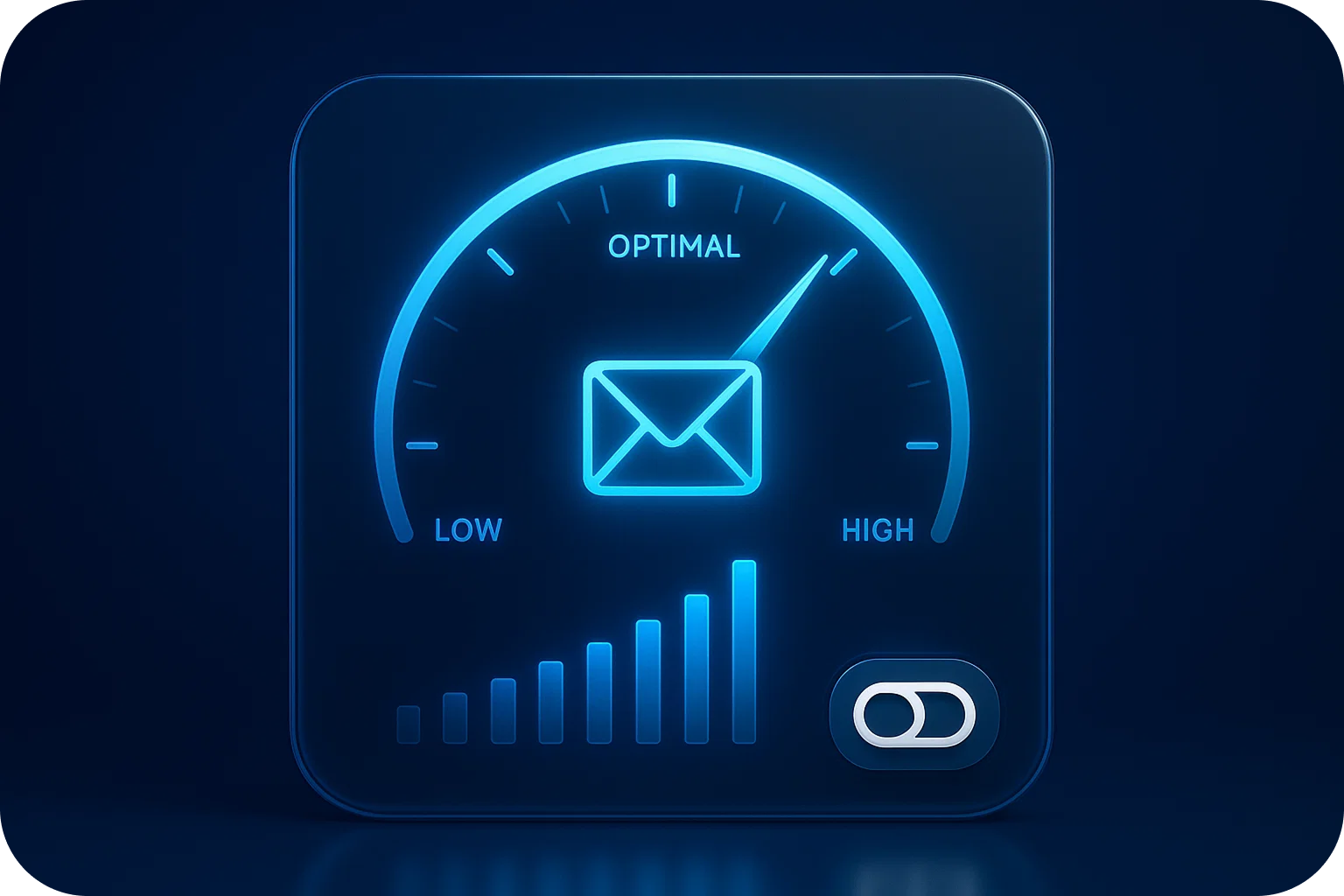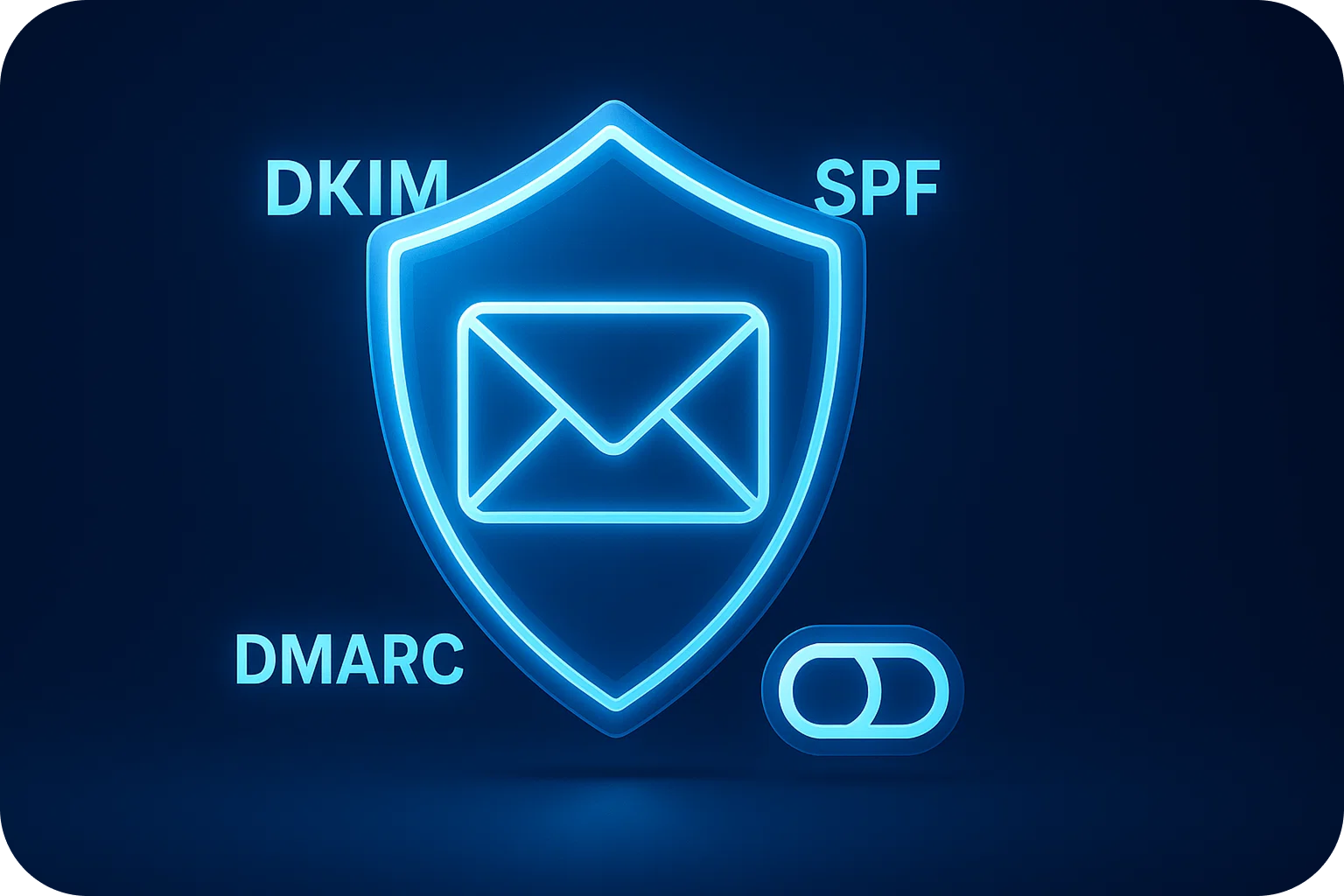The Email Velocity Sweet Spot: Finding Your Optimal Send Rate Without Triggering Filters

In cold email outreach, there's a delicate balance between scaling your campaigns and maintaining deliverability. Send too few emails, and you're leaving opportunities on the table. Send too many, and you risk triggering spam filters that can damage your sender reputation for months.
The question every sales and marketing team faces is: what's the optimal email send rate that maximizes reach without compromising inbox placement?
Understanding Email Velocity and Why It Matters
Email velocity refers to the rate at which you send emails from a single inbox or domain over a specific time period. Internet Service Providers (ISPs) like Gmail and Outlook monitor sending patterns closely, and sudden spikes or consistently high volumes from new or low-reputation senders raise red flags.
When ISPs detect unusual email velocity, they may:
- Route your emails directly to spam folders
- Throttle delivery, causing delays or bounces
- Flag your domain or IP address, impacting all future campaigns
- Trigger temporary or permanent blocks
The stakes are high. A single misstep in your send rate can undo months of careful domain warming and reputation building.
The Industry-Standard Recommendation: 20-50 Emails Per Day
Most deliverability experts recommend sending between 20 and 50 cold emails per inbox per day once your domain is fully warmed up. This range has proven effective across thousands of campaigns because it:
- Mimics natural human sending behavior
- Stays well below ISP threshold limits
- Allows for sustainable scaling through multiple inboxes
- Provides enough volume for meaningful testing and optimization
However, this range isn't universal. Your optimal send rate depends on several critical factors that we'll explore below.
Factors That Determine Your Optimal Email Send Rate
Domain Age and Reputation
New domains have zero sending history, which means ISPs treat them with suspicion. If you've just registered a domain, you'll need to start with extremely low volumes, perhaps 5-10 emails per day, and gradually increase over 3-4 weeks.
Established domains with positive sending history can handle higher volumes immediately, sometimes starting at 30-40 emails per day after a brief warm-up period.
Email Provider Type
Different email providers have different tolerance levels for sending volume:
- Google Workspace: Generally more forgiving with gradual increases; can handle 40-50 emails per day per inbox after warm-up
- Microsoft 365 Outlook: More conservative; best to stay around 30-40 emails per day
- Shared IP mailboxes: Require more caution due to shared reputation factors; 20-30 emails per day is safer
Engagement Rates
High engagement, opens, replies, and positive interactions signal to ISPs that your emails are wanted. If you're seeing strong engagement rates (15%+ open rates, 3%+ reply rates), you may be able to push toward the higher end of the recommended range.
Conversely, low engagement rates indicate that you should reduce volume and focus on list quality and messaging before scaling.
List Quality and Targeting
Sending to verified, highly targeted lists results in fewer bounces and spam complaints, which allows for higher send rates. Generic, poorly researched lists will trigger filters quickly, regardless of your send rate.
The Warm-Up Phase: Patience Pays Dividends
Before reaching your optimal send rate, every inbox needs a proper warm-up period. This gradual increase in sending volume establishes your reputation with ISPs and builds trust.
A typical warm-up schedule looks like this:
- Week 1: 5-10 emails per day
- Week 2: 10-20 emails per day
- Week 3: 20-30 emails per day
- Week 4: 30-40 emails per day
- Week 5+: 40-50 emails per day (full capacity)
During warm-up, it's crucial to maintain consistent sending patterns. Avoid large day-to-day fluctuations, and never skip days entirely, as consistency signals legitimacy to ISPs.
Scaling Beyond 50 Emails Per Day: The Multi-Inbox Strategy
Once you've maxed out a single inbox at 40-50 emails per day, the safest way to scale is horizontally by adding more inboxes rather than increasing the send rate from existing ones.
Here's why this approach works:
- Each inbox maintains a safe, natural sending pattern
- Risk is distributed across multiple accounts
- If one inbox encounters issues, others remain unaffected
- You can achieve massive scale (500+ emails per day) while each inbox sends conservatively
Best practice is to use 3-5 inboxes per domain, with each inbox sending 20-40 emails per day. This gives you 60-200 emails per domain daily while maintaining excellent deliverability.
Warning Signs You're Sending Too Fast
Monitor these indicators closely to catch velocity issues before they cause serious damage:
- Declining open rates: A sudden drop suggests emails are landing in spam
- Increased bounce rates: ISPs may be soft-bouncing your emails due to throttling
- Spam folder placement: Use seed testing to check where your emails land
- Delivery delays: Emails taking hours to arrive indicate ISP throttling
- Blacklist appearances: Regular blacklist monitoring is essential
If you notice any of these signs, immediately reduce your send rate by 30-50% and focus on improving engagement before ramping back up.
Advanced Considerations for Enterprise Teams
Time-of-Day Distribution
Don't send all your daily emails in a single burst. Distribute sends throughout business hours (8 AM - 5 PM in your recipients' time zones) to mimic natural human behavior.
Domain Rotation Strategy
For teams sending thousands of emails daily, using multiple domains with proper rotation prevents any single domain from bearing too much volume. Aim for no more than 5 inboxes per domain, with each domain handling 100-200 emails per day maximum.
Dedicated IP Considerations
If you're using dedicated IPs, warm-up becomes even more critical. Start with just 50-100 emails per day across all inboxes on that IP, and increase by 50-100 emails every few days until you reach your target volume.
The Bottom Line: Quality Over Quantity
The optimal email send rate isn't about pushing limits; it's about finding the sustainable pace that maximizes deliverability while achieving your outreach goals. For most teams, that sweet spot is 20-40 emails per inbox per day, scaled horizontally across multiple inboxes and domains.
Remember that deliverability is a long-term game. A conservative approach that maintains 96-98% inbox placement will always outperform aggressive sending that achieves 70% placement, even if the latter reaches more prospects initially.
Start slow, monitor closely, and scale strategically. Your sender reputation and your revenue will thank you.
Ready to Optimize Your Cold Email Infrastructure?
Finding your email velocity sweet spot requires more than just following best practices; it demands robust infrastructure, proper warm-up protocols, and continuous monitoring. Mailpool provides enterprise-grade cold email infrastructure with automated deliverability management, helping you maintain optimal send rates across unlimited domains and inboxes.
With 98% deliverability rates and 10-minute implementation, you can scale your cold outreach 100x while staying safely within ISP limits. Discover how Mailpool can transform your cold email performance today.
More articles
Get started now




%201.png)





